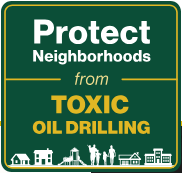New York State Plans Health Review as It Weighs Gas Drilling
September 24, 2012Penn State’s Academic Integrity Tested by Complaint
September 25, 2012Radon Facts
- 1. Radon is a tasteless, odorless, colorless, naturally occurring radioactive noble (does not react with other elements) gas created by the radioactive decay of uranium, thorium and radium. It does not burn and can only be destroyed by radioactive decay. (ATSDR, 2008)
- 2. Radon (222Rn) has a half-life of 3.8 days. It decays by alpha and beta particle emission until it becomes the stable isotope of lead (206Pb). Two decay products are radioactive solids, polonium (210, 214, 218Po) and lead (210, 214Pb). Polonium decays by alpha particle emission; lead decays by beta particle emission to create the radioactive Polonium isotopes. (Field, 1999)
- 3. Radon and its radioactive decay products enter the body primarily through inhalation. Most of the radon is exhaled prior to radioactive decay while most of the solid radioactive polonium and lead remains in the lungs and will further decay to cause cancer. (Field, 1999)
- 4. Radon is the leading cause of lung cancer among non-smokers and the second leading cause among smokers. EPA attributes 21,000 lung cancer deaths per year on a nationwide basis to radon exposure. (EPA, 2003)
- 5. Although zero is the only “safe” level for radiation exposure, EPA urges mitigation for anyone with indoor levels at 4 picoCuries per liter (pCi/l) and recommends mitigation beginning at 2 pCi/l. (EPA, 2003)
- 6. Radon is present in all natural gas from deep shale formations but levels vary considerably from one field to another. Available studies report that dark shales (eg. Marcellus) are more radioactive (Gogolak, 1980) and radon levels in the produced gas increase with increasing salinity of produced waters. (Kraemer, 1986)
Current Radon Exposure Levels in NYC Metro Area
- 7. Most natural gas consumed now in NYC metro area is from the Texas-Louisiana Gulf Coast and has a radon level at the well head of about 5 pCi/l according to published studies. (Johnson, 1973)
- 8. Transit time to NYC metro area is 6 to 8 days. (Johnson, 1973)
- 9. Average radon levels in gas currently delivered to NYC apartments is about 1.5 pCi/l (Gogolak, 1980) or less.
Future Radon Levels in NYC Metro Area with Marcellus Shale Gas
- 10. Early EPA and USGS studies report radon wellhead levels from 0.2 to 1450 pCi/l in fields across the U.S. (Johnson, 1973) and an eastern (WV and KY) Devonian shale level of 151 pCi/l (Gogolak, 1980). A recent USGS study in the Marcellus area reports a range from 1 to 79 pCi/l and an average of 37 pCi/l (Rowan, 2012).
- 11. Transit time from Marcellus producing areas to NYC metro area is approximately 15 to 20 hours depending on location of well, pipeline route, and transmission speed.
- 12. Based on the three wellhead levels (37, 79 and 151 pCi/l) and travel times, radon levels in Marcellus gas in the NYC distribution system would be 33, 71 or 135 pCi/l (15 hour travel) or 32, 68 or 130 pCi/l (20 hour travel).
- 13. Based on this limited preliminary data, radon concentrations in the Marcellus gas at the burner tip could be 30 to over 80 times current levels. Exposure to increased radon levels will cause more lung cancer deaths over time in the NYC metro area. Clearly, more data on radon levels at key points in the gas delivery system is needed.
Options to Protect Public Health
- 14. Continue to use Gulf Coast gas; don’t allow use of Marcellus gas.. Require radon levels at local distribution connection to be no greater than currently distributed gas. Apartment venting will be sporadic and unrealistic.
- 15. Store Marcellus gas long enough to decay to much less than 4 pCi/l before distribution. Adding the required type of storage would be expensive and may not be available near the New York metro area. (EIA, 2012)
- 16. Refrigerate Marcellus gas to liquefy radon without liquefying the methane. The liquids will continue to be radioactive. This option would be expensive, especially for dry gas production areas. (EIA, 2003)
Prepared by Jeff Zimmerman, Esq. for Damascus Citizens for Sustainability, Inc(DCS) and NYH2O, Inc.
Contact: B. Arrindell, Director, DCS dcs@DamascusCitizens.org office phone: 845-252-6677
REFERENCES
ATSDR. (2008). Draft Toxicological Profile for Radon.
EIA. (2012). Basics of Underground Natural Gas Storage. http://www.eia.gov/pub/oil_gas/natural_gas/analysis_publications/storagebasics/storagebasics.html.
EIA. (2003). The Global Liquified Natural Gas Market: Status & Outlook. DOE/EI- 0637.
EPA. (2003). Radon Health Risks. http://www.epa.gov/radon/healthrisks.html.
Field, R. W. (1999). Radon and Health Risk. Hanley and Belfus (Philadelphia).
Gogolak, C. V. (1980). Review of 222 – Radon in Natural Gas Produced from Unconventional Sources. DOE/EML – 385.
Johnson, R. H. (1973). Assessment of Potential Radiological Health Effects from Radon in Natural Gas. EPA -520/1-73-004.
Kraemer, T. (1986). Radon in Unconventional Natural Gas from Gulf Coast Geopressured-Geothermal Reservoirs. Environmental Science & Technology, 20, 939-942.
Rowan, E. L. (2012). Radon-222 Content of Natural Gas Samples from Upper and Middle Devonian Sandstone and Shale Reservoirs in Pennsylvania: Preliminary Data. U.S.G.S.



